Neuschwanstein Castle in Bavaria (Southern Germany) predates the creation of the modern movie industry, but it has all the elements of a make-believe movie set on steroids.
Perched on a cliff in an idyllic setting, full of charm, breathtaking in beauty and in the wild drama that was the life of its creator, it’s almost a real-life fantasy.
So it’s not surprising that when Walt Disney visited Bavaria and saw the castle (sometime before the production of the movie Cinderella in 1950), he decided to model the centerpiece of his fairy tale creations on it.
The comparisons with actual Disney castles are astounding!
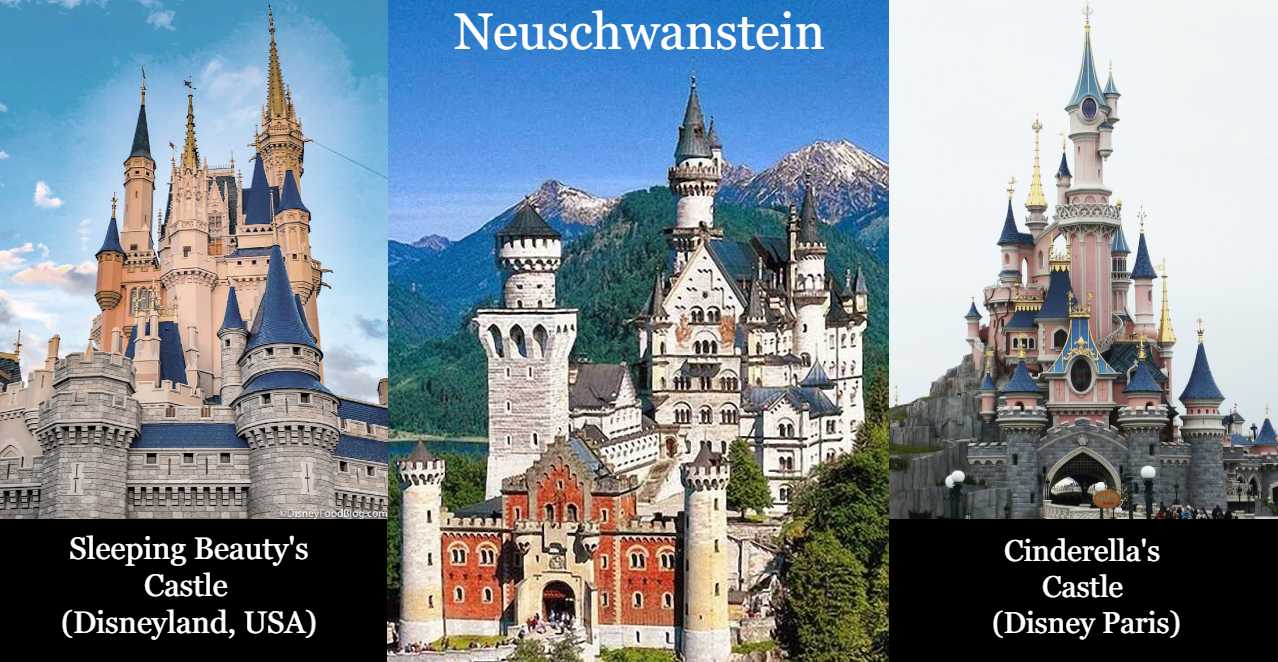
Real but Ephemeral Beauty
Man-made beauty can take your breath away at times, but there is always something about it that reminds us of the fleeting nature of human creations. Human gifts of art and creativity fall like sparks from the fullness of God’s own creative Being. Humans are creators because we are made in His image and likeness. Animals aren’t so blessed.
Yet, it’s good to remember that we are always co-creators with God. Our powers of creation do not extend to creating things out of nothing, or creating the mathematically perfect structure of the material world, the majesty of the mountains, or the deep, complex beauty of living beings and natural systems. These are the fruits of God’s creative powers alone.
We have to use the materials that God created first as our means of fashioning beautiful things in this world. And, as beautiful as human works can be, everything humans create is somehow flawed, temporary, or ephemeral in comparison with God’s works.
A Colorful History
Neuschwanstein is a good example of the passing and oftentimes flawed beauty of human creations. King Ludwig II of Bavaria (1846-1886), the visionary creator of this amazing work of architecture, was about as imperfect a leader as Germany has ever produced – which is saying a lot – but he was unquestionably a colorful and artistic character!
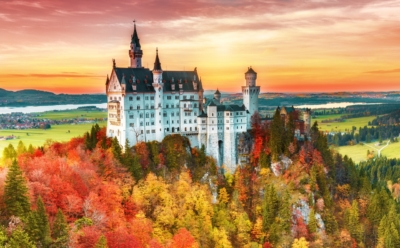 His short life of forty years was a tragi-comedy of sorts that left in its wake some magnificent works, which hopefully will outlast his equally incredible failures and mistakes that marked his young life.
His short life of forty years was a tragi-comedy of sorts that left in its wake some magnificent works, which hopefully will outlast his equally incredible failures and mistakes that marked his young life.
Ludwig inherited the throne of the kingdom of Bavaria at age 18 when his father Maximilian died (1846). Two years later he lost all real political power when Bavaria was defeated in war with its powerful neighbor to the north, Prussia, and was made a vassal of the larger German empire.
When the disparate kingdoms of Germany united to choose an Emperor, Ludwig was passed over in favor of his cousin Wilhelm, who was the grandfather of the famous Kaiser Wilhelm II known to history.
It is said that King Ludwig was a dreamer from his youth and that he greeted his loss of political power by retreating from reality into a fantasy world of his own creation, focusing on building fairy-tale castles and feeding his obsessive admiration for the German composer Richard Wagner. There is some merit to the theory, as we will see.
Neuschwanstein is really the king’s monument to Wagner, who never set foot in the place. The castle contains a boutique theater meant for Wagnerian operas, and Ludwig intended most of the 200 rooms to be modeled on themes from Wagner’s works. (Only fourteen rooms were actually finished.)
The Mad King
Based on his unstable personality, his many eccentricities, and a lot of poor decision-making, the moniker of the “mad King Ludwig” became the official story line propagated by his enemies. The reality is more complex and probably quite pragmatic.

The real problem was that Ludwig spent most of his two decades as king building castles and accumulating debt. In a word, he spent money like a drunken kaiser. A great deal of money. Ludwig built four castles in that short time, and his magnum opus, Neuschwanstein, alone cost over $48 million – unfinished.
Supposedly, he used only his family fortune to build them, but that didn’t mean his extravagances had no impact on his kingdom. Ludwig borrowed money from every bank in the realm (and beyond) to finance his fantasies, and then repeatedly threatened to commit suicide when his creditors came to collect!
Finally, when Ludwig had racked up over $115 million in debt (pretty impressive for a 40-year-old guy who didn’t even have a credit card) and wasn’t paying his workers, the kingdom’s ruling class had had enough. They declared the king legally insane and arrested him after a brief standoff at the castle. German efficiency at its finest.
Three days later the king died in a mysterious drowning accident together with the very psychiatrist who had declared him insane – hmmm – I told you this was a colorful and tragic story.
An old Latin phrase about the vanity of vanities comes to mind: Sic transit gloria mundi. (Thus passes the glory of the world.)
Ludwig’s Beautiful Legacy
Despite his tragic end, it’s hard to fault Ludwig for the magnificent castle he left to posterity. Even though he himself lived in the unfinished Neuschwanstein a total of only 172 days, he is said to have supervised every detail of its building, and his vision and placement of it were spectacular.
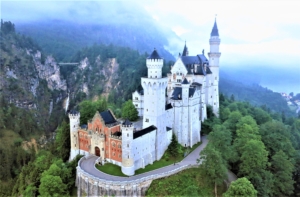 Here are a few details that will help you appreciate the true beauty and wonder of this castle:
Here are a few details that will help you appreciate the true beauty and wonder of this castle:
Name: Schwanstein (“Swan Stone”) was the name of the family castle where Ludwig had spent his summers growing up. He had that old castle re-named so he could use “New Swan Stone” – Neuschwanstein – for his pet project. (When you’re king, you can do things like that.) Some believe he named it after the character “The Swan Knight” in Wagner’s opera Lohengrin.
Placement: The narrow ridge in the Tyrolian foothills upon which Neuschwanstein is built had been the site of an older castle in ruins. The 425-foot platform of rock falls directly away into the steep Pöllat Gorge some 650 feet below but offers a magnificent view of the Alps in the background and the broad, fertile valley below. The nearby Swan Lake, which was made popular by Tchaikovsky’s ballet, is in the low-lying area to the north. The castle’s setting could not have been more pristine.
Concept: Ludwig’s vision for Neuschwanstein, which he outlined in a letter to Wagner, was as a sort of medieval knight’s castle. That explains several large images and carvings of St. George slaying a dragon that can be seen on both the exterior and the interior of the castle. Unlike castles of bygone eras, however, this one has no fortifications – it was meant not for battle but for sheer beauty!
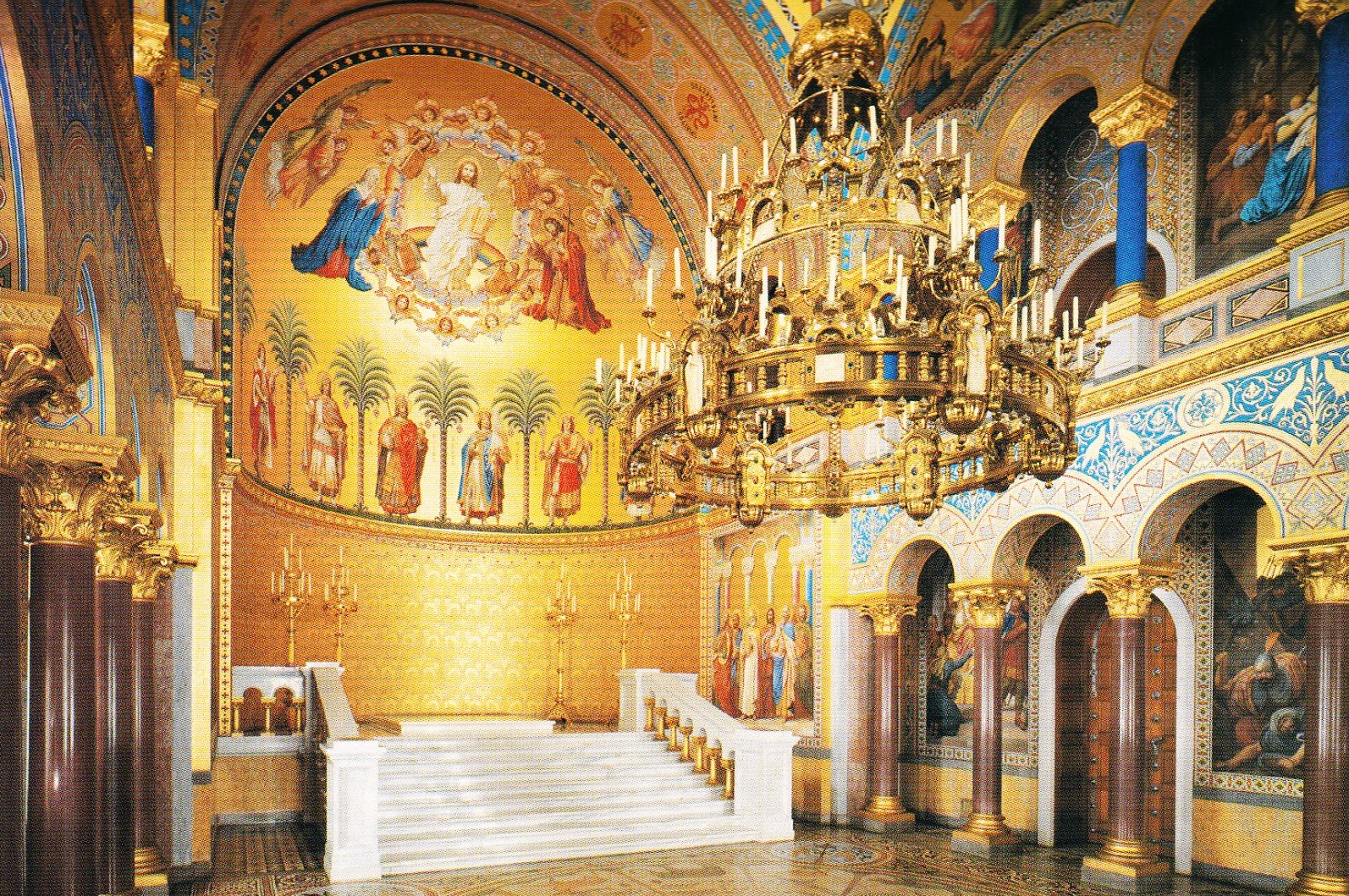
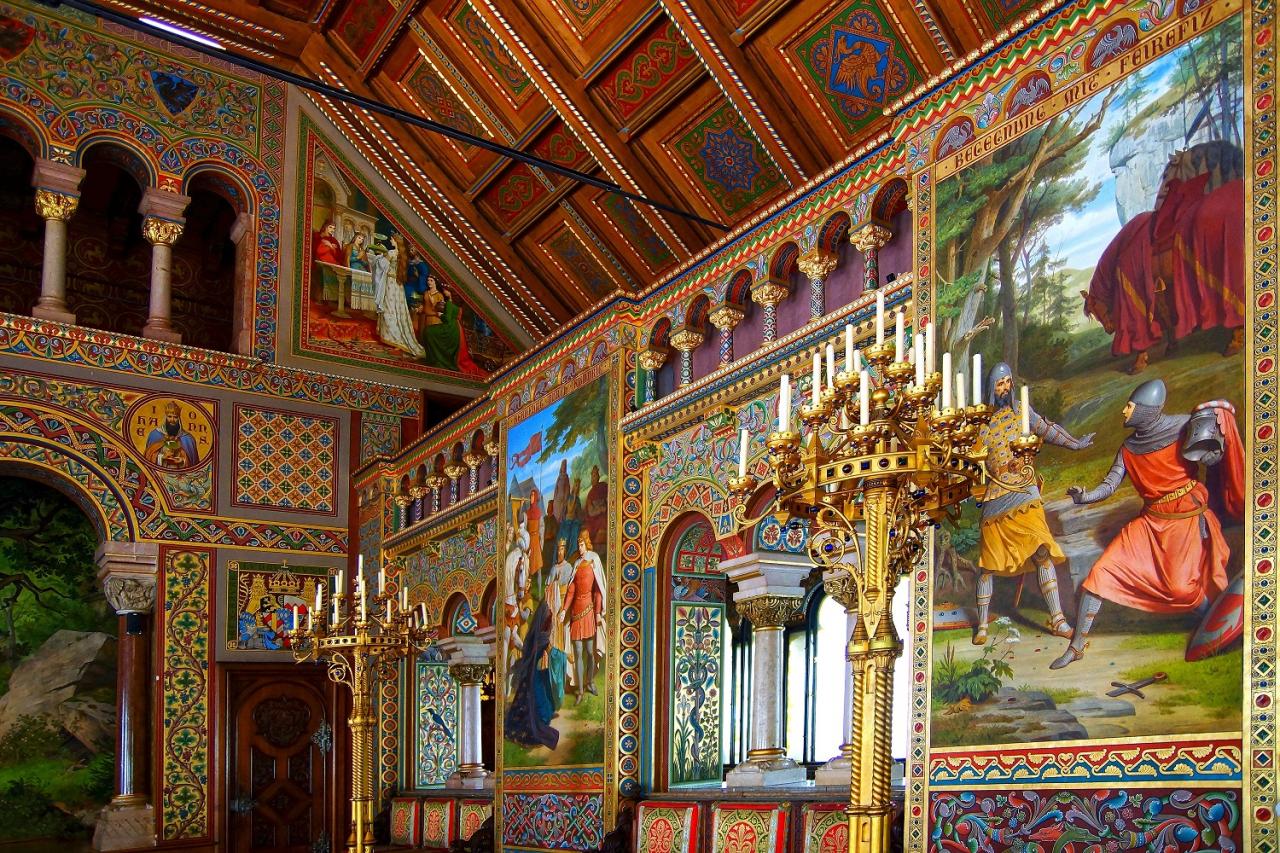
Style: Its main architectural style is Romanesque, fitting the revival of that same style in Europe during the 1800s. The highest tower reaches 213 feet. Its interior is eclectic, incorporating classical European motifs, Moorish architecture, and a throne room that looks as if it could have been plucked right out of a Byzantine cathedral.
Modern aspects: Neuschwanstein may be the first European castle ever built with modern accommodations such as steel construction, electricity, flushing toilets and plumbing, hot water, and even telephones (a new technology in the 1880s)!
Quirky aspects: We shouldn’t be surprised that a highly personal building project reflects in some way the quirky personality of the builder. Here are just a few of the quirks:
- Neuschwanstein was designed by a theatre set designer, not an actual architect;
- It has a dining room meant to seat only one person;
- The castle has no royal court, just residential areas for the king and his servants;
- A planned chapel was never finished (priorities, Ludwig, priorities!);
- There is a theatre on the top (6th) floor called The Hall of Singers that never actually featured a performance of Wagner’s operas and which contains paintings of battle scenes where the combatants shed no blood (I love that one); and of course, true to its name, it has
- A swan pool and an artificial cave (grotto) with a lit waterfall!
There is a certain irony to one final quirk: the ornate throne room of Ludwig’s magnificent castle lacks the one thing that would have made it a true palace: a throne.
Neuschwanstein is truly beautiful, yes, but it’s good to remember that someday even this glorious structure will be just another set of ruins on a hill. Oh, the passing splendor of this world’s beauty!
The only beauty that endures rests in the hands of the Creator of all beauty.
Don’t Miss this Drone’s Eye Video of Neuschwanstein (duration, 2:28)
[This article is a reproduction of the Sacred Windows Email Newsletter of 1/23/22, so it does not end with the regular Soul Work section. Please visit our Newsletter Archives.]
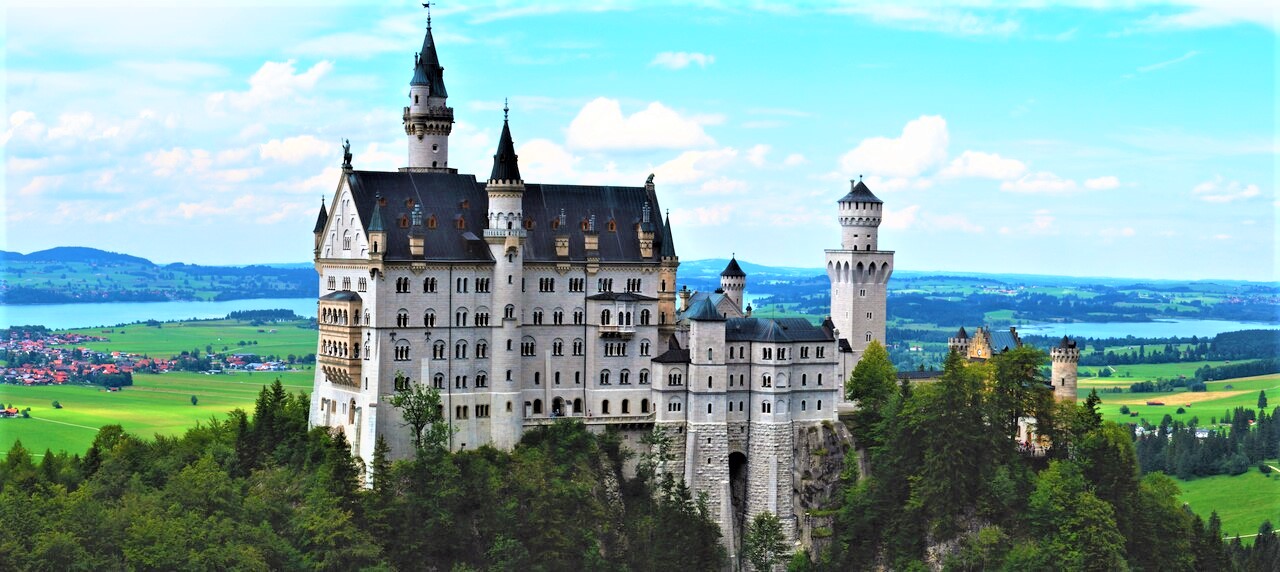
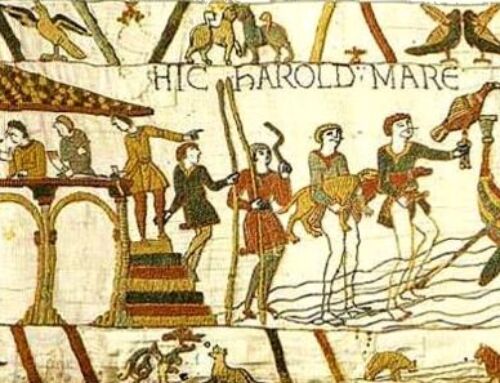


I have dreamed of visiting this castle for years and hopefully next year I will.
I’m sorry to say I haven’t visited it yet myself. Only admired from a distance. I hope to see you there next year, Larry! Thanks for the feedback.